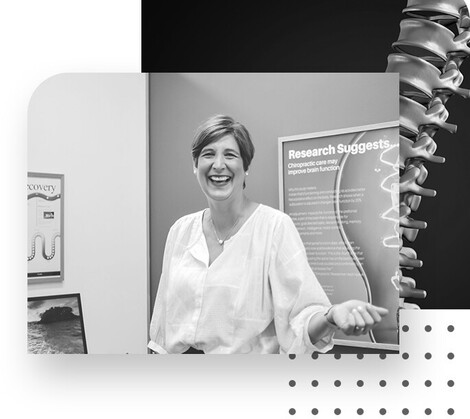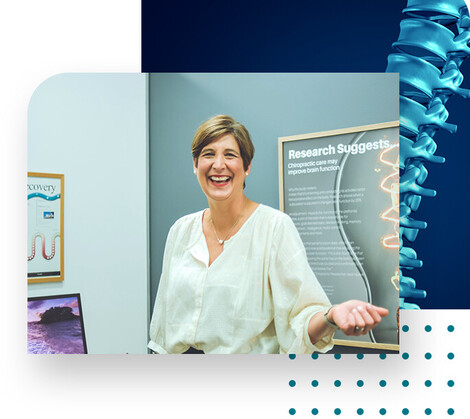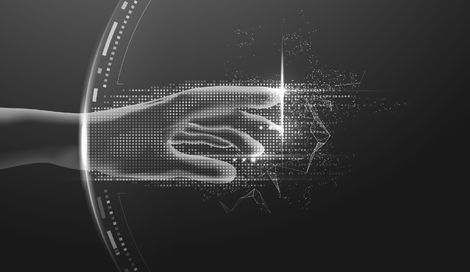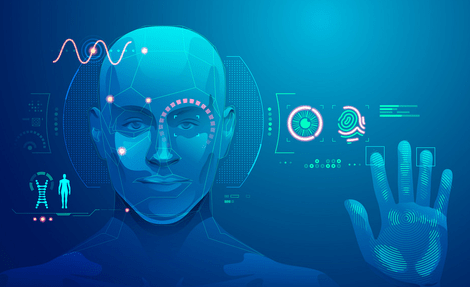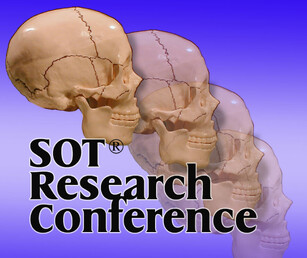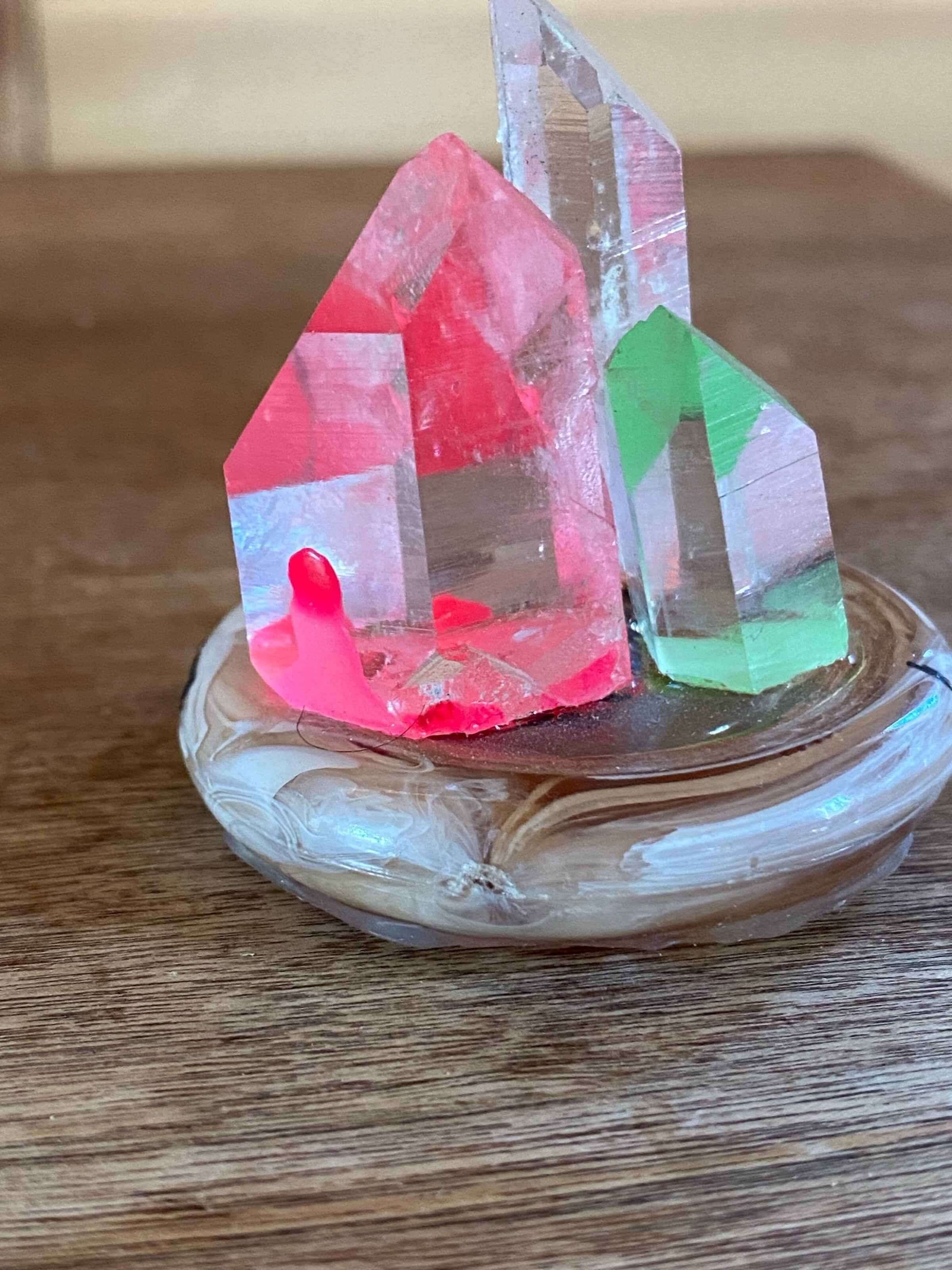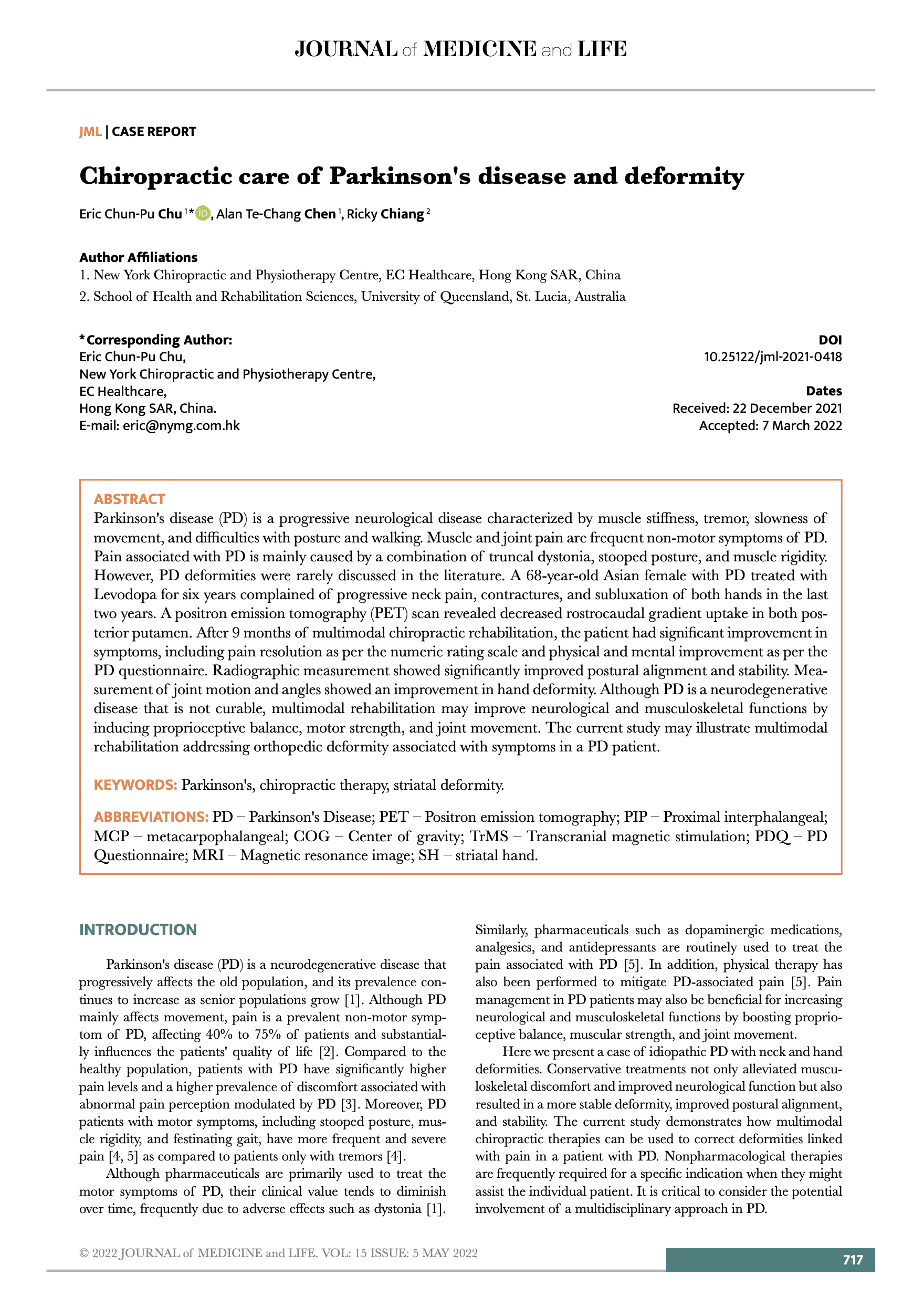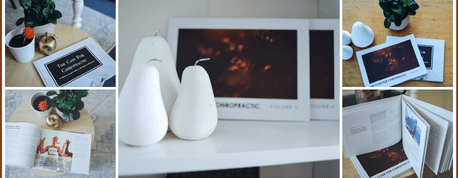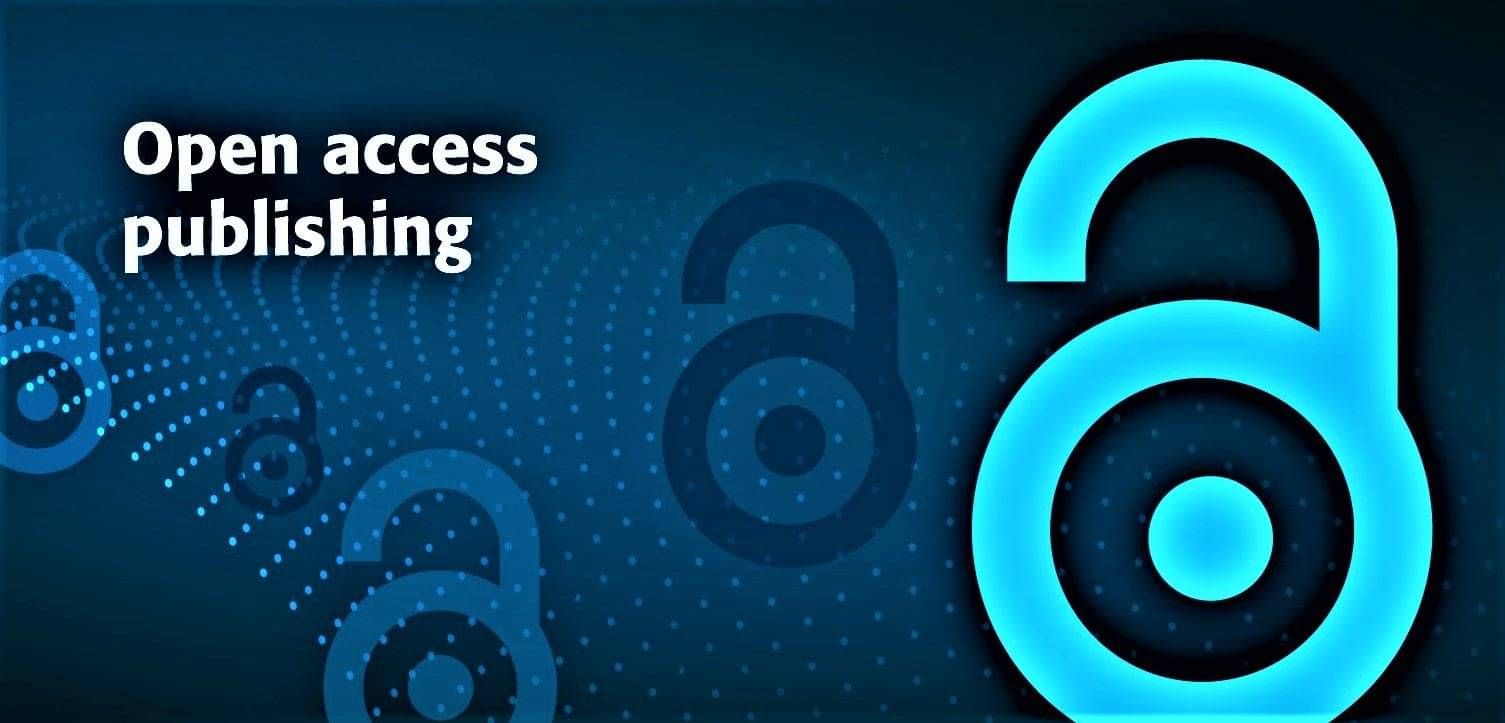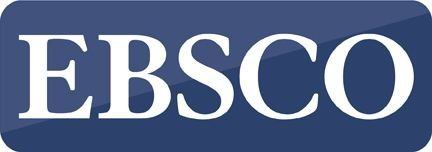In Memoria: Edwin P Devereaux; Chester A Wilk
Editorial: Vaccinating our children: Is there an emergency warranting a rush to judgment?
Davis and Davis: Energy Medicine and Gemstone Harmonics: A history of harmonics development (referencing a case report)
Cuthbert: Best Practice Guidelines for Diagnosing Muscle Imbalance: Chiropractic versus Physiotherapy
Schmitt & McCord: Set Point (Touch & Tap) Technique for chronic injury, inflammation, & pain relief
Rome & Waterhouse: Is anecdotal evidence undervalued?
WCCS: The WCCS: A phoenix arising from the ashes
Masarsky Wide Angle Lens: Creativity and Chiropractic
Clinical Huddle: Doctor, what is the intention of your adjustment?
Weiner: Genetic etiology of adolescent idiopathic scoliosis (AIS): Chiropractic’s role
Job-Herrman: Wir werden was wir denken: Ein Fallbericht / We become what we think: A Case Report
Vitez C, Blum CL: Postural orthostatic tachycardia syndrome (POTS) in a patient as a consequence of a concussion along with occipital headaches, dizziness and nausea
Cuthbert: Applied Kinesiology Management of Whiplash Associated Disorder (WAD): A Case Report
Our top 4 selections:
The 13th Sacro Occipital Technique Research Conference was held 29 April 2022 in New Orleans, Louisiana, US. The SOT research conferences offer doctors in clinical practice and within the research arena to share in a welcoming environment. For many doctors this is their first attempt at preparing a research submission, crafting a powerpoint presentation, and sharing their findings for peer review in a conference setting. Several of these submissions will be submitted to peer reviewed journals for publication. While these conferences have been held annually from 2009 through 2019, due to the pandemic there was a hiatus until 2022. We are pleased that this year we had an additional e-poster format to go along with the usual platform presentations of the research accepted for this conference.
The Sacro Occipital Technique Research Conferences follow a similar submission and presentation format to the Association of Chiropractic College – Research Agenda for Chiropractic Conferences (ACC-RACs) so doctors are prepared if they wish to share their work and attend other research meetings. This year’s research conference proceedings also shared some stories by recent graduates and their experiences in international arenas beginning their chiropractic practice.
At the conference innovative case reports are shared on chiropractic care for nonmusculoskeletal presentations, scoliosis, temporomandibular joint disorders, and an assortment of other fascinating discoveries shared from doctors in clinical practice.
An Australian era has ended
It was with considerable sadness that I wrote the heading for this tribute to Dr Ed Devereaux. Whilst recognising the immense importance of paying appropriate and loving accolades to those who crafted chiropractic as a profession in Australia, it is not an easy task. Not the least for the fear there are many others who could speak more eloquently in the memory of Ed.
There are not only the patients he touched, but also the politicians, and more important perhaps, the members of associations over time which knew they had a giant in their corner, fighting for their place in the emerging profession of chiropractic as it grew to become in Australia.
I am not sure I could presume to speak for Ed and suggest he would be happier with one truly representative association of chiropractors in Australia, but all that he achieved and has left in his considerable wake, is something for which I am personally grateful. And yes, the sooner CA joins with the ACA the better, in my book.
Ed’s presence will be missed, perhaps painfully at our various professional gatherings, but his spirit and its effect on the many he touched will keep us moving forward with a gentleman’s dignity and eloquence.
Such was the man Edwin P Devereaux, AM.
Cite: Ebrall PS. Edwin P Devereaux [In Memoriam]. Asia-Pac Chiropr J. 2022;3.1. URL apcj.net/Papers-Issue-3-1/#DevereauxObit
A global era has ended
Chester Wilk, DC, 91, the lead plaintiff in the momentous chiropractic lawsuit of Wilk et al. vs. AMA et al., died April 21 following a short illness in Advocate Lutheran General Hospital in Park Ridge, Illinois, the Chicago suburb where he lived and practiced.
Against all odds, with limited support from within his profession, Wilk led and ultimately won an antitrust lawsuit that proved that the American Medical Association, America’s most powerful medical organisation, had led a boycott that included a Who’s Who of American medicine aimed at wiping out chiropractic as a profession
Howard Wolinsky, a highly regarded and reputable journalist granted exclusive inside access, pays tribute to Dr Wilk's passing as the end of a global era of growth and goodwill for the chiropractic profession.
Cite: Wolinsky H. Chester Wilk [In Memoriam]. Asia-Pac Chiropr J. 2022;3.1. URL apcj.net/Papers-Issue-3-1/#WilkWolinskyObit
Vaccinating our children: Is there an emergency warranting a rush to judgment?
This Journal supports informed decision-making by patients and does not have a position regarding vaccination. We publish this Editorial by Dr Blum to help inform individual decision-making by readers.
Cite: Blum CL. Vaccinating our children: Is there an emergency warranting a rush to judgment?. Asia-Pac Chiropr J. 2022;3.1 URL apcj.net/papers-issue-3-1/#BlumEditorialChildhoodVaccination
Immediate changes to lumbosacral dural regions upon simultaneous bilateral compression to the parietooccipital (asterion) cranial region: A dissection study
Abstract: Objective The relationship between clinical application to the cranium and sacral region has been questioned. The purpose of this study was to assess whether an anatomical functional relationship could be demonstrated through the application of pressures to the cranium with visualisation of its effect on the dural volume in a dissected sacral region.
Methods Two cadavers were carefully dissected to expose the lumbosacral dural sac. Lateral to medial pressure was applied by hand simultaneously and bilaterally to cranial contacts just above the asterion. Careful observation of the dural sac pre and post application of pressure was performed.
Results It appeared that with application of cranial pressure, the sacral dural sac expanded up to twice the resting diameter observed before cranial pressure was applied. It returned to its approximate original volume after the pressure was released.
Conclusion This study represents the first attempt to assess if a relationship exists between the application of pressure to the cranium and a response in the lumbosacral meningeal region affected by the action of cerebrospinal fluid.
Indexing Terms: Sacro Occipital Technique (SOT); Cranial-sacral connection; dura; dural sac; cranial technique.
Cite: Pick M. Immediate changes to lumbosacral dural regions upon simultaneous bilateral compression to the parietooccipital (asterion) cranial region: A dissection study. Asia-Pac Chiropr J. 2022;31. URL www.apcj.net/papers-issue-3-1/#PickDural
Peer-review, virtue-signalling, and the censoring of ideas: Publication is no longer an elite activity. Oh, and a Babygate update [Editorial]
Abstract: We advocate for all Australian children to have access to chiropractic care as part of their basic human rights. We endorse the June 2017 position of the Chiropractic Board of Australia and urge all chiropractors to continue with their diligent and ethical provision of care to all patients. We note with admiration the development of matrescence as a stream of continuing professional development within the Australian Chiropractors Association and express our concern with those instances where it is known that peer-review has become a traded commodity, leading to the publication of questionable science. As a journal of peer-reviewed, evidence-based chiropractic clinical science we assure all readers of the sanctity of our review processes.
Indexing Terms: chiropractic; matrescence; pediatrics/paediatrics; Chiropractic Board of Australia.
Cite: Ebrall P. Peer-review, virtue-signalling, and the censoring of ideas: Publication is no longer an elite activity. Oh, and a Babygate update. URL apcj.net/papers-issue-3-1/#EbrallEditorial2022Q3
Energy Medicine and Gemstone Harmonics: A History of Harmonics Development and a Case Report
Abstract (Narrative): Piezoelectricity exists in the human body when stress or mechanical excitation is applied directly to the crystalline structure of bones. It has also been found recently in collagen, cartilage, tendons, teeth, the trachea, intestines, muscle fibres and blood vessels. We have experimented with clinical applications utilising Quartz Crystal and Gemstones to treat various patient conditions and report our finding that the sternum has reflex points acting as a mirror image of the spine. Clinically these reflex points are believed to relate to organ dysfunction or spinal misalignment upon the sternum and are associated with a piezoelectric effect.
Energy Medicine procedures involve assessing any change in strength of the right arm by placing the back of the patient’s left hand to the left of the sacrum and this region is called the Piezoelectric Vital Force Indicator. If weakness is noted of right arm upon left hand placement this indicates the need for the Piezoelectric Resonance Technique. With this positive test, the doctor palpates the six sternal piezoelectric reflex point determining the most sensitive of the points and sometimes there may be more than one point that could be extremely sensitive.
A specifically calibrated quartz crystal may then be utilised in a therapeutic manner. The patient may report a deep sense of tingling, warmth and relaxation.
Post treatment indicators are changes in grip strength and triceps and biceps deep tendon reflexes return to normal. Other clinical symptoms recorded on presentation are re-assessed and are generally ablated.
We conclude that low risk interventions that yield significant patient outcomes while difficult to study may still warrant clinical investigation and use in chiropractic practice when other procedures have proved ineffective. Further research is needed into the Piezoelectric Resonance Technique to determine what subset of patients might be best suited for this method of care and if the outcomes are reliable and consistent.
Indexing terms: Chiropractic; Piezoelectric Resonance Technique; crystal; Etheric Modification Therapy; harmonics; sacro-occipital technique.
Cite: Davis KY, Davis LV. Energy Medicine and Gemstone Harmonics: A history of harmonics development (referencing a case report). Asia-Pac Chiropr J. 2022;3.1 URL apcj.net/papers-issue-3-1/#DavisDavisPiezoelectric
Best Practice Guidelines for Diagnosing Muscle Imbalance: Chiropractic versus Physiotherapy
Abstract: Professor Vladimir Janda, an accomplished physiotherapist and neurologist, was a key figure in the 20th Century rehabilitation and manual therapy movement. Janda founded the rehabilitation department at Charles University Hospital in Prague, Czechoslovakia.
He was one of the seminal members of the Prague school of manual medicine and rehabilitation that expanded its influence throughout Central and Eastern Europe. Janda published over 16 books and more than 200 publications about muscle function, and has had a major influence over the physical therapy profession around the world. A review of Janda’s published works demonstrates the breadth of his clinical interest and influence. His published papers varied greatly in their focus: from pediatrics to geriatrics, in addition to the lasting effects of pediatric conditions upon the adult, from postural to neurologic disorders, and from ankle conditions to obscure facial pain. His 1964 college thesis paper was on the association between sacroiliac pain and gluteus maximus weakness. (Janda, 1964)
In addition to publishing several texts in Czech, Janda subsequently published books in German and English. Janda’s approach has been discussed in many text books, often in chapters that he authored. Many years ago, Janda published a manual muscle testing book in English that is now out of print. (Janda, 1983) Many leaders in the manual therapy world, like Drs. Chaitow and Liebenson, have depended upon the work of Vladimir Janda for their concepts of muscular imbalances and the use of the manual muscle test (MMT). These leaders interact and write in one another’s books spreading the Janda-model far and wide.
This is unfortunate because of 5 PROBLEMS in Dr. Janda’s view of muscle inhibitions … and fortunate as well because it has increased the worldwide understanding of the significance of MMT’s diagnostic potential of muscle imbalances in human health.It may be that an entire generation of manual therapists has abandoned the diagnostic gold-mine of the MMT in part because of Janda’s approach to the assessment of ‘muscular imbalance’. This paper explores this contention.
Indexing Terms: manual muscle test; muscle imbalance; Applied Kinesiology (AK); diagnosis; physical therapy profession; Goodheart; Janda.
Cite: Cuthbert S. Best Practice Guidelines for Diagnosing Muscle Imbalance: Chiropractic versus Physiotherapy. Asia-Pac Chiropr J. 2022;3.1. URL apcj.net/papers-issue-3-1/#CuthbertBestPractice
Set Point (Touch & Tap) Technique for chronic injury, inflammation, & pain relief
Abstract: A pain relief technique is presented based on applied kinesiology (AK) manual muscle testing (MMT) procedures correlated with acupuncture meridian therapy principles. MMT procedures are used to identify a painful area and an associated acupuncture head point (AHP.) Tapping this AHP (by the doctor or the patient) coincident with the patient touching the painful area often results in dramatic pain relief and increased range of motion.
Indexing Terms: chiropractic; AK; Applied Kinesiology; Set point touch and tapTechnique; acupuncture head points.
Cite: Schmitt WH, McCord KM. Set Point (Touch & Tap) Technique for chronic Injury, inflammation, and pain relief. Asia-Pac Chiropr J. 2022;316 URL apcj.net/papers-issue-3-1/#SchmittTouchTap
Is anecdotal evidence undervalued?
Abstract: There have been growing reservations about the appropriateness of dismissing anecdotal evidence as a significant and acceptable form of clinical evidence.
The question is explored here as to whether anecdotal evidence has attracted appropriate recognition in the biological sciences, and further should it be ranked higher that its current status as providing significant clinical evidence.
The authors could not locate any scientific study which conclusively justified the relegation of anecdotal evidence to the level it is currently rated. They concluded that it is only the current narrative that has swept away anecdotal evidence without due investigation and scientific assessment of a notion that seemed to have merit.
This appears to have become a self-perpetuating trend, in being dismissive of what some would regard as a lower level of formal evidence in health care.
Contrary to this, there has been mounting support for appreciating the contribution that this model of evidence can offer, and that it should therefore be afforded greater recognition within the hierarchy of evidence.
Indexing terms: Anecdotal evidence; Evidence Based Medicine; Evidence based Practice; Hierarchy of evidence; Clinical guidelines.
Cite: Rome P. Waterhouse JD. Is anecdotal evidence undervalued? Asia-Pacific Chiropr J. 2022;3.1. URL apcj.net/papers-issue-3-1/#RWAnectodalEvidence
The WCCS: A phoenix arising from the ashes
The future is good
The WCCS has the remarkable ability to make its members feel as though they are part of something that is bigger than themselves. We are the only international student-led chiropractic organization, paving the way for a future of higher standards of chiropractic care, globally.
We have started to plan face-to-face events again and are encouraging our members and chiropractic students from around the world to be represented by an organization that previously brought so many people together for so many years. There is still a small flame that burns within this organization, and that little flame is the members that have enough faith and patience to nurture it and watch it spread to more regions and to more members over time.
Cite: Wagner T. The WCCS: A phoenix arising from the ashes. Asia-Pac Chiropr J. 2022;3.1 URL apcj.net/papers-issue-3-1/#WagnerWCCS
Finding the professional identity of chiropractic in Australasia that shaped education: A pragmatic narrative of the Inquiry Period from 1960 to 1979
Abstract: This paper weaves a pragmatic narrative around the historical events that forged the professional identity of chiropractic in Australasia. In particular I examine four statutory elements from 1945 to 1960, a position of a political party in 1963, and then five formal government inquiries. I also report the rebuttals by both the mainstream chiropractic association and the second-stream chiropractic association in Australia to one particular report. I conclude that prior to 1960 a clear identity of chiropractic was ‘palpation and adjustment of the spine to remove (possible) nerve interference or pressure’ using X-rays as a diagnostic aid. I regard 1960 as the inflexion point from which the Palmer identity of ‘identifying and correcting subluxed vertebrae’ lost its purity, to be regained by The Inglis Report in 1979 from which the Palmer identity returned and chiropractic became its own legislated profession with the broad concept of spinal manipulation for the purpose of neural modulation of physiological factors to benefit health, today’s well-being. The evidence also shows that the characteristics of chiropractic’s professional identity played a role in the emergence of chiropractic education, those characteristics being discipline singularity and the standards with which formal institutions of chiropractic education complied in order for their graduates to achieve registration or licensure.
Indexing Terms: chiropractic; history; Australia; Government Inquiries; identity; education
Cite: Ebrall P. Finding the professional identity of chiropractic in Australasia that shaped education: A pragmatic narrative of the Inquiry Period from 1960 to 1979. Asia-Pac Chiropr J. 2022;3.1. URL apcj.net/papers-issue-3-1/#InquiryPeriod
Wide angle lens: Creativity and Chiropractic
Abstract: To report a semi-formal ‘in-clinic’ inquiry as to whether a patient noted changes in their level of creativity following chiropractic spinal adjustment. We interviewed 27 subjects and found a subjective trend suggestive of improved creativity and work-flows. We recommend this matter be formally investigated as it points to a huge potential for chiropractors to contribute to enhancing the output of creative communities.
Indexing Terms: Chiropractic; creativity; adjustment; subjective assessment.
Cite: Masarsky CS. Creativity and chiropractic: A broad and slippery concept [The wide-angle lens]. Asia-Pac Chiropr J. 2022;2.5. URL apcj.net/papers-issue-3-1/#MasarskyCreativity
Doctor, what is the intention of your adjustment? A Clinical Huddle
Abstract: Practice Wisdom suggests that the quality of care we provide is enhanced when the intentions of both the doctor and the patient are aligned.
Indexing Terms: chiropractic; intention; patient communication
Cite: Elbert R. Doctor, what is the intention of your adjustment? A Clinical Huddle. Asia-Pac Chiropr J. 2022;3.1 URL apcj.net/papers-issue-3-1/#ElbertHuddleIntention
Genetic aetiology of adolescent idiopathic scoliosis (AIS): Chiropractic’s role
Abstract: Introduction Recent studies have demonstrated there are genetic and epigenetic underlying causes for adolescent idiopathic scoliosis (AIS). Apparently a genetic defect causing ciliary pathology in the neural canal can affect CSF flow and can result in scoliosis. A review of this emerging evidence demonstrates the need to re-evaluate the scoliosis-cerebral spinal fluid (CSF) relationship. Compelling studies have illustrated, as well, the dominant role played by epigenetic modifiers over the expression of genetic code. One fascinating study, in particular, has demonstrated definitively that scoliosis in zebra fish can be corrected through epigenetics.
Methods The goal of this study was to revisit the current and newly published studies concerning scoliosis, epigenetics, as well as evaluating the currently available therapeutic alternatives for scoliosis treatment. The intent was to shed light on breakthrough studies and apply these finding to the chiropractic clinical practice.
Results The position of chiropractic in this new arena of scoliosis and epigenetics is unfolding. These studies that were reviewed have demonstrated that chiropractic care can affect epigenetic mechanisms through five different avenues: environmental influences, methylation processes, elongating DNA telomeres, emotional stress reduction, and reducing chromosomal oxidative stress. Chiropractic management of scoliosis can be an effective tool for care, with minimal negative secondary effects. Recent studies are finding ineffectiveness of scoliosis bracing along with poor outcomes and serious secondary effects from surgical interventions for scoliosis treatment.
Conclusion Therefore from a conservative, effective, low risk perspective chiropractic care appears to be an important consideration for scoliosis patients. Further study into this novel emerging field of care for scoliosis patients is indicated.
Indexing terms: Chiropractic; Adolescent Idiopathic Scoliosis (AIS); conservative care; cerebral spinal fluid (CSF); sacro-occipital technique.
Cite: Weiner G, Blum C. Genetic aetiology of adolescent idiopathic scoliosis (AIS): Chiropractic’s role. Asia-Pac Chiropr J. 2022;3.1 URL apcj.net/papers-issue-3-1/#WeinerAIScoliosis
Eficacia del adjuste Quiropractico en disminucion de Espasticidad y MejoraPostural en infantes con Paralisis Cerebral: A case report [Spanish] / Effectiveness of the Chiropractic adjustment to decrease spasticity and offer improvement in infants with Cerebral Palsy: A case report
Abstract Objective: The objective of this study is to demonstrate the efficacy of chiropractic adjustment in patients with infantile cerebral palsy in reducing spasticity and improving their posture.
Methods: 8 infants were taken into account, of which 2 met the necessary characteristics for this study, these consisted of spastic quadriparesis, decreased muscle tone and mobility restriction, the study was carried out for 4 months, having as a result 48 sessions with the patients, radiographic studies were performed at the beginning and at the end, muscle tone and spasticity were also measured by means of scales.
Results: Changes were observed in the radiographic studies as well as in spasticity since it decreased and the postural improvement became more evident, as the process continued, the cognitive and motor progress was better both in session and at home.
Discussion: The findings refer that chiropractic adjustments benefit in the short and long term, since spasticity decreased and postural improvement was evident. Although the effects were long-term and there was progress in a general way with evidence from parents as well as from radiological studies, future study is suggested.
Indexing Terms: Chiropractic; Cerebral palsy; chiropractic adjustment; spasticity.
Cite: Cortes D. Eficacia del adjuste Quiropractico en disminucion de Espasticidad y MejoraPostural en infantes con Paralisis Cerebral: A case report [Spanish]. Asia-Pac Chiropr J. 2022;3.1. URL apcj.net/papers-issue-3-1/#CortesCerebralPalsy
Integrating temporal-sphenoid reflexes, sacro-occipital technique procedures, and reflexology for treatment of chronic cervical pain and reduced range of motion: A report of 2 cases
Abstract Introduction: The purpose of the following two case studies was to investigate how a combination of temporal sphenoidal (TS) reflexes, chiropractic manipulation, viscerosomatic reflexes, and foot reflexology could have a positive effect on cervical spine range of motion.
Case Reports: Case #1 involved a 38-year-old female with chronic (17-years duration) neck and low back pain. Case #2 involved a 43 year old male presenting with chronic (6-months) neck and low back pain with limited cervical range of motion.
Methods/Intervention: Treatment utilised sacro occipital technique (SOT) protocols, TS reflexes, cervical manipulation, and foot reflexology to treat chronic cervical pain associated with limited range of motion.
Results: Case #1, following the first treatment noted full range of motion in all directions and the presenting pain reduced from an 8 to a 3 on a pain scale of 1-10. Case #2 received 11 treatments over a 3-4 week period of time and by the 11th office visit right lateral flexion was full and presenting pain was reduced from an 7 to a 2-3, all other motions were full and pain free.
Conclusion: Further research is indicated with a larger sample and more outcome assessment tools to further investigate this method of care.
Indexing terms: Chiropractic; temporal-sphenoid reflexes; chronic cervical pain; cervical spine; sacro-occipital technique.
Cite: Feenstra H, Blum CL. Integrating temporal-sphenoid reflexes, sacro-occipital technique procedures, and reflexology for treatment of chronic cervical pain and reduced range of motion: A report of 2 cases. Asia-Pac Chiropr J. 2022;3.1 URL apcj.net/papers-issue-3-1/#FeenstraBlumReflexes
Wir werden was wir denken: Ein Fallbericht/ We become what we think: A Case Report
Abstract: This case report of a 48-year-old woman shows how correlations between our attitude towards potential stress and the resulting mindset may have influence on our physical health. Permanent stress at work, e. g., can lead to muscle tension accompanied by pain. The case study illustrates the importance of considering potential connections of physical pain and emotional factors. These concepts should be included in manual treatment.
Indexing terms: Applied Kinesiology, emotional stress, muscle tension, PEP, EFT, B & E technique
Cite: Job-Herrman C. We become what we think [Case Report Abstract, German & English, report in German]. Asia-Pac Chiropr J. 2022;3.1 URL apcj.net/papers-issue-3-1/#Job-Herrman
Postural orthostatic tachycardia syndrome (POTS) in a patient as a consequence of a concussion along with occipital headaches, dizziness and nausea: A case report
Abstract Objective: To investigate the synergetic benefits of combined noninvasive chiropractic protocols for treatment of post-traumatic POTS.
Clinical Features: A 36-year-old female sought chiropractic care for POTS induced nausea/dizziness/palpitations, constant bilateral occipital headaches, neck and sacroiliac/sciatic pain, exercise intolerance and bloating. Patient history, physical examination, and active 10-minute stand test established that she met the criteria for POTS. Prior to her presentation at this office her symptoms had persisted for a year and were unresponsive to other interventions (medical care/over-the-counter-analgesics).
Intervention and Outcome: Craniocervical and spinal misalignments, believed possibly leading to cerebral vasculature and connective tissue deformation, were corrected according to the Sacro-Occipital Technique and Atlas Orthogonal upper cervical evaluation protocols. Specific POTS related therapeutic exercises, diet modifications, as well as ocular fixation exercises were also implemented. Orthostatic vital sign testing was regularly recorded to assess POTS patient’s response to care. Following combined treatment and adjunct therapy, the patient no longer met the criteria for POTS, did not exhibit pain or orthostatic intolerance symptoms to postural change except for mild brief bouts of dizziness.
Conclusion: Further research is needed to determine what subsets of patients with POTS might also respond to this conservative chiropractic care approach.
Indexing terms: Chiropractic; Postural Orthostatic Tachycardia Syndrome (POTS); Atlas Orthogonal technique; sacro-occipital technique.
Cite: Vitez C, Blum CL. Postural orthostatic tachycardia syndrome (POTS) in a patient as a consequence of a concussion along with occipital headaches, dizziness and nausea: A case report. Asia-Pac Chiropr J. 2022;3.1 URL apcj.net/papers-issue-3-1/#VitezBlumTachycardia
Applied Kinesiology Management of Whiplash Associated Disorder (WAD): A Case Report
Abstract: Whiplash injuries and their associated disorders (WAD) are remarkably complex conditions which may explain the modest effects of typical medical, physical therapy and chiropractic interventions investigated to date.
This report describes a complex post auto-whiplash patient and provides a replicable treatment protocol which successfully restored the patient’s pre-accident health status.
Indexing Terms: chiropractic; AK; Applied Kinesiology; MVA; Whiplash; WAD
Cite: Cuthbert S. Applied Kinesiology Management of Whiplash Associated Disorder (WAD): An Applied Kinesiology chiropractic case report. Asia-Pac Chiropr J. 2022;3.1. URL apcj.net/papers-issue-3-1/#CuthbertAKandWAD
Skoliose – Ganzheitliche Diagnostik und Behandlung mit Applied Kinesiology / Scoliosis - Holistic Diagnosis and Treatment with Applied Kinesiology
Abstract: From a purely orthopedic point of view scoliosis is defined as a lateral curvature of the spine according to Cobb exceeding 10 degrees in the coronary plane with accompanying rotation and torsion of the individual vertebrae. Traditional treatments consist in physiotherapy according to Schroth, redressment via plaster casts, brace treatment and surgery.
The author analyzes the pathology from the perspective of Applied Kinesiology (AK). Special diagnostic possibilities based on muscle tests and linked integrative treatment methods open up further ways to influence the course of the disease. Applied kinesiology includes all aspects of the Triad of Health (mental, chemical and structural factors) in the treatment.
In addition, during the treatment of scoliosis patients in addition to other physiotherapeutic techniques the author recurs to therapeutic climbing, a relatively recent but highly functional training method, which will be briefly outlined in this article.
Indexing terms: Scoliosis, holistic diagnosis, applied kinesiology, muscle tests, injury, Triad of Health, therapeutic climbing
Cite: Röthinger C. Scoliosis - Holistic Diagnosis and Treatment with Applied Kinesiology [Abstract, German & English]. Asia-Pac Chiropr J. 2022;3.1 URL apcj.net/papers-issue-3-1/#Rothinger
Neurologie leicht gemacht: neurologische Basisdiagnostik und Therapiestrategien in der manual- medizinischen Praxis / Neurology made simple: Neuro-Basics in Osteopathy and Chiropractic
Abstract: AK is functional neurology. This has been postulated for decades. The realization of this postulate in daily practice on the other hand has only been partially successful. The attempts to teach the basics of neurological rehabilitation in compact AK textbook chapters (chapter 7 (Garten 2016), chapter 12 (Garten 2018)) failed according to practical experience. This article draws the conclusion and simplifies the material radically without violating science. The reader should study the article carefully, even though he might have been finding neurology very complicated. This article will make comprehension easy for him.
AK examines motor programs and uses these as a diagnostic window into the functional systems of our patients. All efferents are motor events, which should not be examined exclusively via manual muscle testing of AK, which examines skeletal musculature. Oculomotricity and visceral motricity (pupillary reaction, vascular tonus, sudoresis, digestive activity) can be simply assessed and supply diagnostic keys to defined areas of the central nervous system.
Dysfunctions of the central nervous areas are always super- ordinate. The definition of such dysfunctions is part of basic diagnostics, which will determine the treatment protocol just as well as the definition of peripheral areas of disturbance and injury areas as well as metabolic, biochemical stressors.
When a patient is examined for the first time, depending on the case a minimal program of neurological diagnostic should be performed. It should be appropriate to define gross central nervous imbalances and integrate these in the therapy. Manual techniques and sensory stimulations like B & E – technique, IRT and others are appropriate for such central nervous imbalances. Segmental dysfunctions moreover should not be treated in contradiction with the needs of the central nervous system.
Indexing terms: Neurological basic diagnostic, central nervous imbalances, topographical neurological diagnostics, Applied Kinesiology, functional neurological rehabilitation
Cite: Garten H. Neurology made simple: Neuro-Basics in Osteopathy and Chiropractic [Abstract, German & English, paper in German]. Asia-Pac Chiropr J. 2022;3.1 URL apcj.net/papers-issue-3-1/#Garten
Chiropractic care of Parkinson's disease and deformity: A case report [Reprinted with permission, Journal of Life and Medicine]
Abstract: Parkinson's disease (PD) is a progressive neurological disease characterized by muscle stiffness, tremor, slowness of movement, and difficulties with posture and walking. Muscle and joint pain are frequent non-motor symptoms of PD. Pain associated with PD is mainly caused by a combination of truncal dystonia, stooped posture, and muscle rigidity. However, PD deformities were rarely discussed in the literature.
A 68-year-old Asian female with PD treated with Levodopa for six years complained of progressive neck pain, contractures, and subluxation of both hands in the last two years. A positron emission tomography (PET) scan revealed decreased rostrocaudal gradient uptake in both pos- terior putamen. After 9 months of multimodal chiropractic rehabilitation, the patient had significant improvement in symptoms, including pain resolution as per the numeric rating scale and physical and mental improvement as per the PD questionnaire. Radiographic measurement showed significantly improved postural alignment and stability. Mea- surement of joint motion and angles showed an improvement in hand deformity.
Although PD is a neurodegenerative disease that is not curable, multimodal rehabilitation may improve neurological and musculoskeletal functions by inducing proprioceptive balance, motor strength, and joint movement. The current study may illustrate multimodal rehabilitation addressing orthopedic deformity associated with symptoms in a PD patient.
Indexing terms: Parkinson's, chiropractic therapy, striatal deformity.
Cite: Chu ECP, Chen AT-C, Chang R. Chiropractic care of Parkinson's disease and deformity: A Case Report. Reprinted from Journal of Medicine and Life. Asia-Pac Chiropr J. 2022;3.1 URL apcj.net/papers-issue-3-1/#ChuParkinsons
Disclaimer
This journal is a professional journal by chiropractors for chiropractors. Readers not fully trained as a chiropractor should not act on their own on any information published in these pages and should always discuss their situation with their chiropractor.
The papers addressing COVID report current information at their time of writing. The topic is fast moving and readers are encouraged to extract threads from what we publish here and undertake their own searches for the most recent information.

